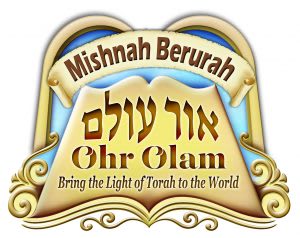Tying Neckties on Shabbos

Question: Is it permitted to tie a necktie on Shabbos?
Discussion: There are various ways for one to tie a necktie, such as with a Windsor knot, half Windsor, Simple (or Oriental) knot, etc. Generally speaking, the process of tying a necktie requires one to take the wider end of the necktie and configure it around the thinner end, thereby producing an ornamental knot of sorts. The permissibility of any particular knot is dependent on how the knot is tied. For most knots used in neckties, the process is merely an intricate way of wrapping the wide end around the thin end without actually creating any real knot whatsoever (rather, something having the halachic status of a bow, which is permitted). Such necktie-knots are undone simply by pulling the thin end out of the knot, causing the knot to automatically fall apart without any untying. In this case, since no actual knot is created, one is permitted to tie such a knot on Shabbos 171.
Some necktie-knots are tied in a way that even after the thin end is slipped out of the wide one, the wide one remains tied to itself, just as one ties a string to itself and makes a knot in the middle. (One can identify if the knot is of this type by the way one knots the tie; if the back of the wide end is facing out before wrapping around the thin end, it is presumably a knot of this type, otherwise it is no different than a bow). Some Poskim172 forbid making such a knot on Shabbos, even if one intends to undo the knot within twenty-four hours, comparing it to tying a string into itself. Others173 are lenient even regarding such a knot. Some compare it to a bow on top of a single knot, which one may tie on Shabbos. Others174 claim that since it is not made to tie two things together, it is not considered a ‘knot’ at all.
Sometimes one ties a necktie and leaves the knot for an extended period of time (for instance, for someone else who does not know how to tie a necktie-knot). The permission of knotting a necktie for an extended period of time also depends on the type of knot. If it is of the first type, one can tie the knot even if he intends to leave the knot for more than twenty-four hours175. This is because such a knot is considered merely as a bow and one has no time constraint when tying a simple bow (with no knot underneath) on Shabbos. If the tie is considered like a bow on top of a single knot, although one can tie such a knot on Shabbos, he may not do so if he commonly leaves the knot for more than twenty four hours176. Note, that if one makes the knot intending it to remain forever, it is possible that all types of knots would be forbidden. In such a case it would be considered as if he is ‘creating’ the piece of clothing in a permanent shape, which would be forbidden due to the melachah of ‘makeh b’patish’177.
In any event, once the knot has been made, loosening it and tightening it around the neck without undoing the knot is permitted 178.
171. Shemiras Shabbos K’hilchasah (Chapter 15, note 208) citing Rav Shlomo Zalman Auerbach, Shabbos Home (Chapter 14, note 11) in the name of Rav Moshe Feinstein, Zachor V’Shamor, cited in Toras Hamelachos (IV p.80). Megillas Sefer (end of chapter 21) initially ruled stringently in this matter, but in Toras Hamelachos (p.79) he is quoted as having changed his mind – see there.
172. Chut Shani (II, p.227 – see Toras Hamelachos IV p. 80 that this is based on Chazon Ish 3:12), Ayal Meshulash (8:14:2, p.179, note 69), Megillas Sefer (ibid.). It is of note that in earlier editions of Shemiras Shabbos K’hilchasah (15:58) he differentiated between the two types of knots, and in the latest version (15:62) he does not.
173. Zachor V’Shamor (ibid).
174. Shabbos Home (ibid).
175. Zachor V’shamor (ibid). Ayal Meshulash (ibid). It would seem as though Shemiras Shabbos K’hilchasah is stringent in this matter requiring that one open even this type of knot within twenty-four hours.
176. Zachor V’shamor (ibid), Or L’tzion (II 47:21), Shemiras Shabbos K’hilchasah (ibid).
177. Chut Shani (ibid).
178. Shemiras Shabbos K’hilchasah (ibid).
